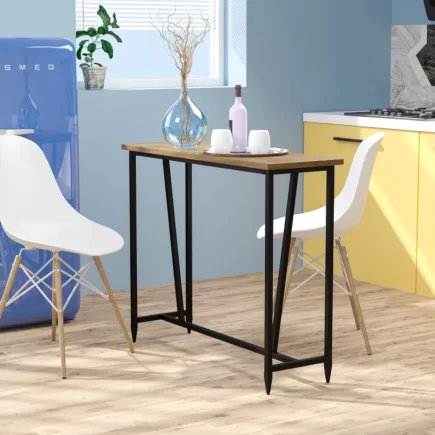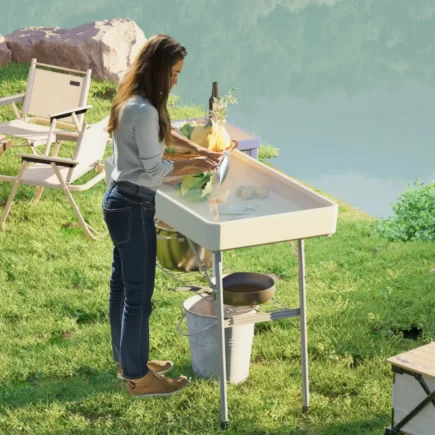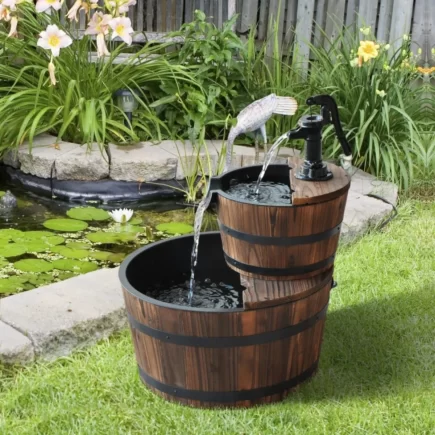Painting a metal plant stand is a simple and affordable way to restore its charm and enhance its aesthetic appeal. Whether your stand has become rusty, worn, or simply outdated, a fresh coat of paint can completely transform its look. Not only will you improve its appearance, but you’ll also increase its durability, especially for outdoor use, protecting it from the elements.

In this article, we will discuss the essential steps of painting your metal plant stand and provide expert tips to help you achieve a flawless, long-lasting finish.
Essential Tools and Supplies for Painting a Metal Plant Stand
Before you start, gather the following materials to ensure a smooth painting process:
| Tool | Purpose |
| Sandpaper or wire brush | To remove rust and old paint, and smooth the surface |
| Metal primer | To promote adhesion and protect against rust |
| Spray paint | To provide a smooth, durable finish |
| Painter’s tape | To mask off areas you don’t want to paint |
| Gloves | To protect your hands from paint and solvents |
| Small brush (optional) | For touch-ups and fine detailing |

Preparing Your Metal Plant Stand for Painting
Cleaning and Removing Old Paint or Rust
Start by thoroughly cleaning your plant stand. Use a wire brush or sandpaper to remove any loose rust, dirt, or old paint. This ensures the new paint will adhere properly. After sanding, wipe the stand with a clean cloth to remove dust and debris.
Sanding the Metal Surface
Sanding helps to create a slightly rough surface, which allows the primer and paint to bond better. Use medium-grit sandpaper to sand the surface evenly. Don’t skip this step, as it’s essential for proper adhesion.
Cleaning After Sanding
Once you’ve finished sanding, clean the surface again to remove sanding dust and debris. You can use a cloth dampened with a solvent recommended for metal surfaces. This will ensure you’re working with a clean, dust-free surface for priming.
Choosing the Right Primer and Paint for Metal Surfaces
Why Metal-Specific Primer is Crucial
For the best results, always use a primer designed for metal surfaces. Primers help the paint adhere more effectively and protect the metal from rust and corrosion. Without it, the paint may peel or fade more quickly.
Types of Paint for Metal:
- Spray Paint: The easiest option for metal plant stands, providing an even finish without brush marks.
- Glossy: Offers a sleek, shiny look and is great for a modern feel.
- Matte: Ideal for a more subdued, industrial look.
- Satin: A balance between gloss and matte, offering a soft sheen that’s easy to maintain.
Priming Your Metal Plant Stand
Using your metal-specific primer, spray a thin, even coat over the entire surface of the stand. Hold the spray can about 6–8 inches away from the surface and apply in a sweeping motion to avoid pooling. Allow the primer to dry completely, following the manufacturer’s instructions for drying time.

Tips for Even Coverage
- Ensure the primer is applied in light, multiple coats for even coverage.
- Avoid thick, heavy layers of primer, as they can lead to uneven drying or clumping.
Painting Your Metal Plant Stand
Step-by-Step Painting Process
- Apply Thin Coats of Paint: Once the primer is dry, shake the spray paint can thoroughly and apply the first thin coat of paint in even, sweeping motions.
- Multiple Coats: Allow the first coat to dry for about 15–20 minutes, then apply a second coat. For the best results, aim for 2–3 light coats rather than one heavy coat.
- Avoiding Drips and Uneven Coverage: To prevent drips, hold the spray can 6–8 inches from the surface and use smooth, overlapping strokes. Avoid spraying too long in one spot.
Letting the Paint Dry and Cure
Drying Time Between Coats
Allow each coat of paint to dry completely before applying the next. Drying time will vary depending on temperature and humidity but usually ranges from 15 to 30 minutes between coats.
Curing the Paint
Once you’ve applied all coats, let the plant stand cure for at least 24 hours. During this time, avoid touching or moving the stand to prevent smudging or damaging the finish.

Ensuring Durability and Protection
To protect your painted metal plant stand from the elements, consider using a weather-resistant spray paint formulated for outdoor use. Additionally, applying a clear sealer or protective topcoat can help prevent fading, rust, and peeling caused by rain, sun, and humidity.
Best Protective Finishes
- Clear acrylic spray: Adds a protective layer that seals the paint and provides UV resistance.
- Rust-resistant coatings: Perfect for outdoor use to prevent rust and extend the life of the paint.
Revitalize Metal Plant Stand
Refreshing Your Plant Stand
A metal plant stand can begin to look worn over time, especially if exposed to outdoor elements. Rust, fading, and chipped paint are all signs that it’s time for a makeover. Instead of tossing it out, a fresh coat of paint can completely rejuvenate your plant stand, making it look like new. The process also serves as a protective layer, shielding your stand from future damage.
Boosting Longevity
In addition to aesthetic benefits, painting also protects your plant stand from rust and environmental wear. Properly applied paint acts as a protective barrier against moisture, which is especially important for outdoor plant stands. With the right materials and techniques, your stand can last much longer, even when exposed to harsh weather conditions.
Creative Customization for Your Metal Plant Stand
Decorative Touches
Once the basic painting is done, you can get creative! Consider adding yellow color to the stand’s edges or using stencils to create custom patterns. Distressing the paint slightly can give the stand a vintage, rustic look. Don’t be afraid to experiment with multiple colors to create a unique design that reflects your style.

Common Mistakes to Avoid When Painting Your Metal Plant Stand
- Uneven Paint Application: Always apply paint in thin, even coats and allow proper drying time between layers.
- Drips and Runs: Avoid heavy application of paint. If drips occur, smooth them out with a small brush or sand lightly once dry and reapply paint.
- Missed Spots: Ensure you spray all angles of the stand. Flip it over if necessary to cover every part evenly.
Your Beautifully Restored Metal Plant Stand
By following these steps, you’ll not only restore your metal Plant Stand but also give it a fresh, modern look that will last for years. From proper preparation to the final curing process, each step ensures a smooth, durable finish that will hold up in both indoor and outdoor settings.
FAQs
1. How can I fix areas where the paint has chipped after application?
To fix chipped paint, lightly sand the affected area, clean it, and then apply a fresh coat of paint. Ensure that you blend the new paint with the surrounding areas for a seamless finish.
2. Can I paint a metal plant stand that already has a layer of protective coating?
Yes, but you’ll need to sand down the protective coating to allow the primer and paint to adhere. Without sanding, the new paint may not bond well to the surface, leading to peeling.
3. Is there a specific weather condition I should avoid when painting my metal plant stand?
It’s best to paint in dry, mild weather. Avoid painting during high humidity, rain, or extreme heat, as these conditions can cause the paint to dry unevenly or not adhere properly.





























